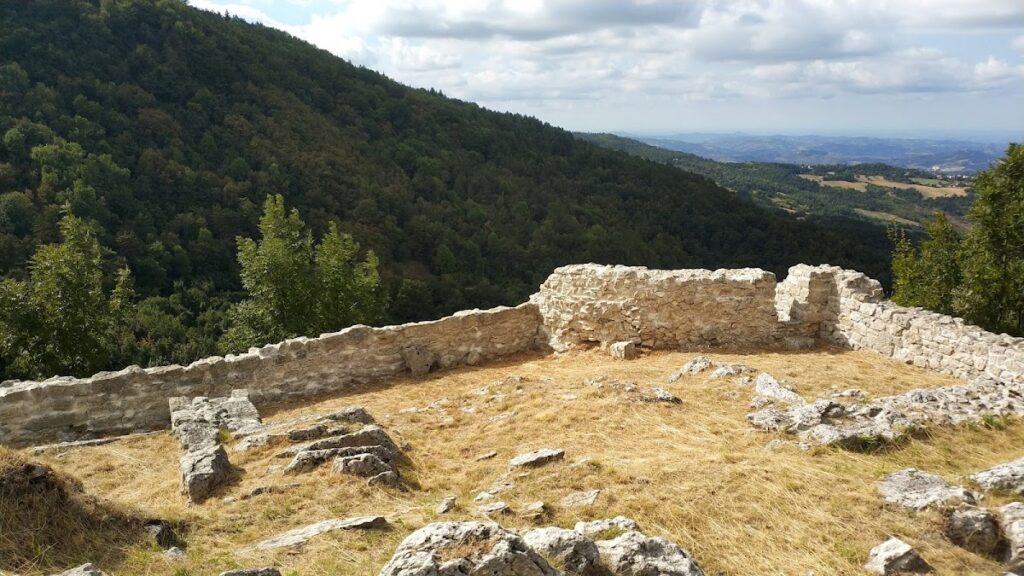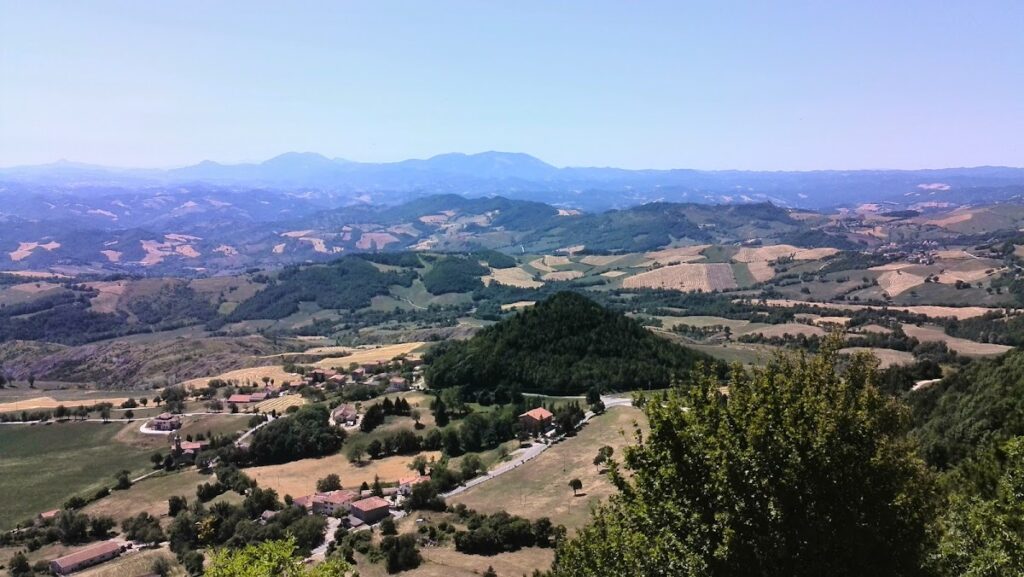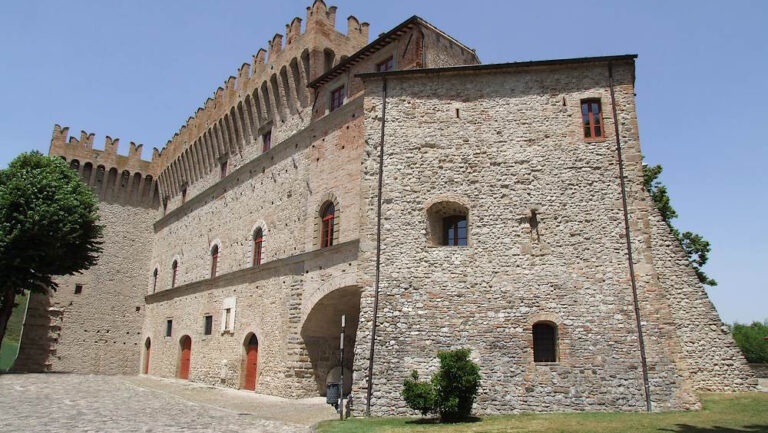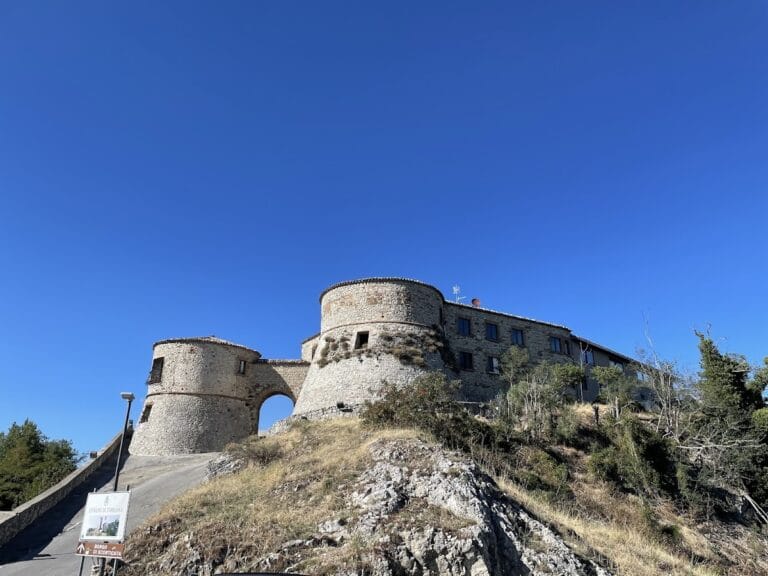Castello di Montecopiolo: A Medieval Fortress in Italy
Visitor Information
Google Rating: 4.3
Popularity: Very Low
Google Maps: View on Google Maps
Official Website: archeologiamedievale.uniurb.it
Country: Italy
Civilization: Unclassified
Remains: Military
History
The Castello di Montecopiolo is situated in the municipality of Montecopiolo in modern Italy. Its origins date back to the 10th century when it was established by the bishops of Montefeltro or their vassals, the Counts of Carpegna. This site was strategically positioned on a high ridge of the Apennine Mountains, overlooking valleys of the Conca and Marecchia rivers, an important natural watershed marking territorial control in the medieval period.
Human activity in the area surrounding the castle precedes the fortress itself by many millennia, with archaeological evidence such as Mousterian flint tools pointing to Neanderthal presence. During Roman times, between the 2nd century BCE and the 4th century CE, the site was occupied by agricultural settlements, seen in remains of farmsteads. However, the castle as a fortified dwelling originated in the early medieval era, becoming a central stronghold for the Montefeltro family. It was the foundation for their regional lordship and later a core fortress within the Duchy of Urbino.
Through the Middle Ages and into the Renaissance, the castle underwent significant expansion and strengthening under the Montefeltro counts. Its military importance was demonstrated during numerous conflicts, including a fierce siege in 1522 led by Giovanni dalle Bande Nere’s forces. Despite this violent attack, the castle remained under Montefeltro control and was never conquered. The fortress served not only as a military bastion but also as an administrative center for the region.
The castle retained its role as a seat of power until the death of the last duke in 1631. Following the extinction of the ducal line, the site gradually lost its population as inhabitants resettled downstream in nearby villages such as Villagrande and Monte Rotto. Over the centuries, the fortress fell into ruin and partial dismantlement, though ongoing archaeological investigations from 2002 onward have uncovered much of its historical fabric and ensured its preservation.
Remains
The Castello di Montecopiolo occupies about 9,000 square meters on a mountain terrace at an altitude exceeding 1,000 meters. The original medieval core consisted of a large stone defensive tower measuring roughly 12 by 12 meters, placed at the highest rock outcrop. This tower was originally enclosed by a robust stone wall, while outside the enclosure a number of functional and residential buildings such as storerooms supported the castle’s activities.
In the 12th and 13th centuries, the castle was expanded extensively. A stone curtain wall was built to protect a settlement established on a lower terrace of the mountain. The original summit tower eventually collapsed and was replaced by a church alongside a palatial residence for the ruling Montefeltro family. By the 14th century, the stronghold included three concentric defensive walls with at least eight large towers reinforcing the fortifications. The lower settlement was also protected by its own walls, all overseen by the dominant summit fortress.
The 15th century brought military changes due to the introduction of gunpowder weaponry. At that time, the castle’s rectangular towers were replaced by round ones better suited to resist cannon fire, walls were raised higher, and some buildings near the summit were removed to create space for artillery movement. Remains of these modifications are visible archaeologically and reflect the adaptation of the site to evolving warfare demands.
The castle also contains large limestone quarries carved during the 10th to 12th centuries, which provided materials for its construction. These quarries and surrounding natural rock formations are notable for their geological interest as well. Although the fortress suffered damage during the 1522 siege, archaeological findings reveal that its structures were repaired and remained in use afterward.
Today, visitors can observe the ruins of the castle’s walls, towers, and former buildings set within a landscape of natural and man-made features. While much was lost over time due to abandonment and later dismantling, recent excavations and conservation efforts have recovered important elements, allowing for a better understanding of the castle’s historical development and architectural evolution.










